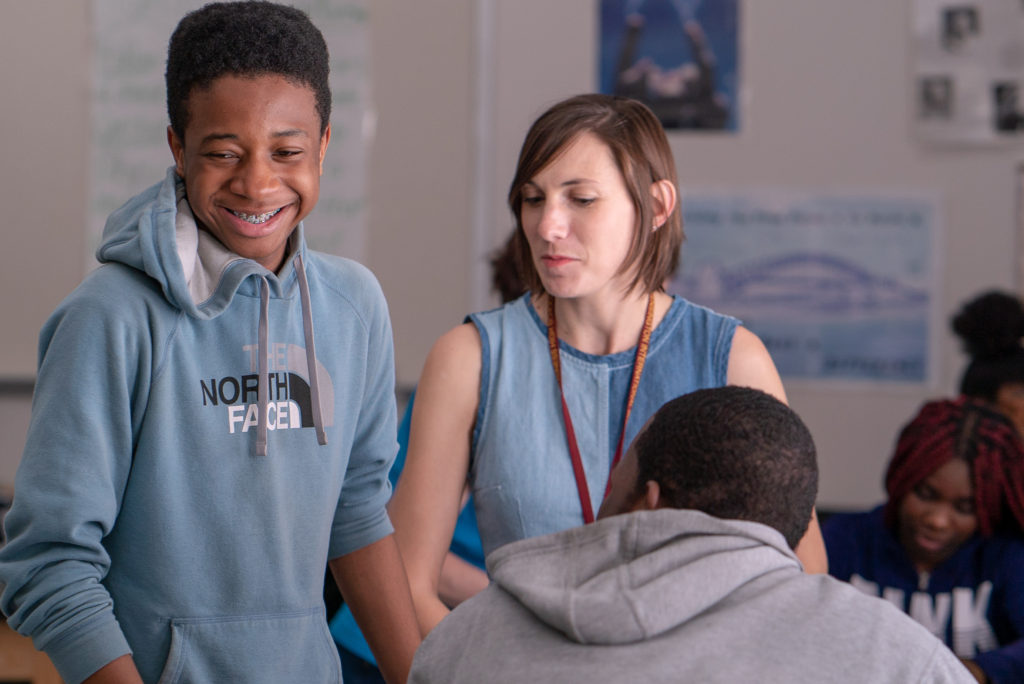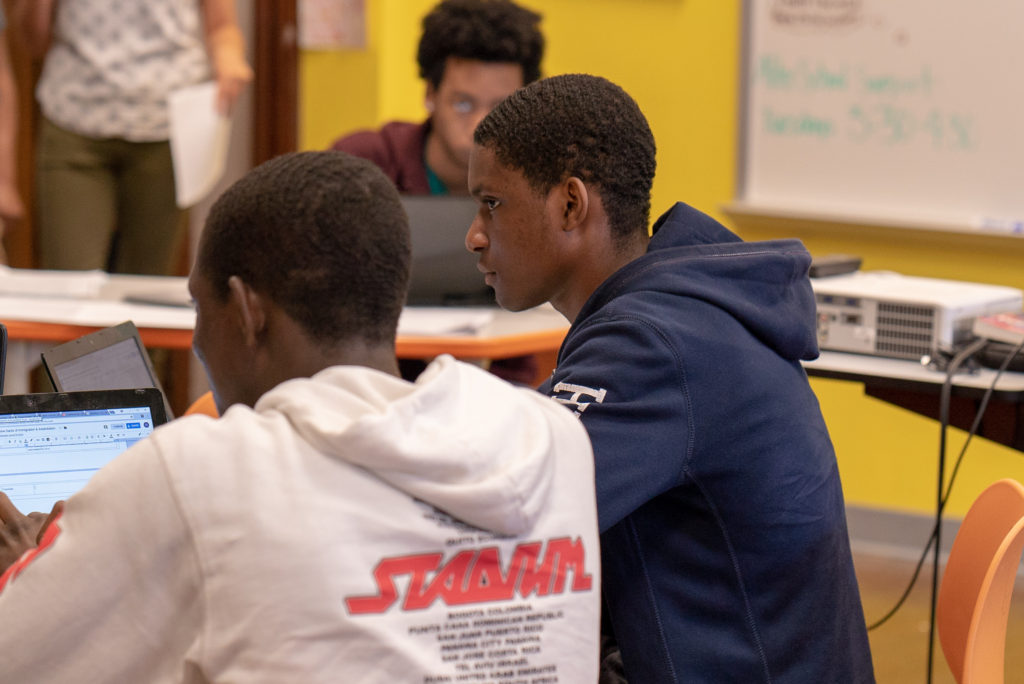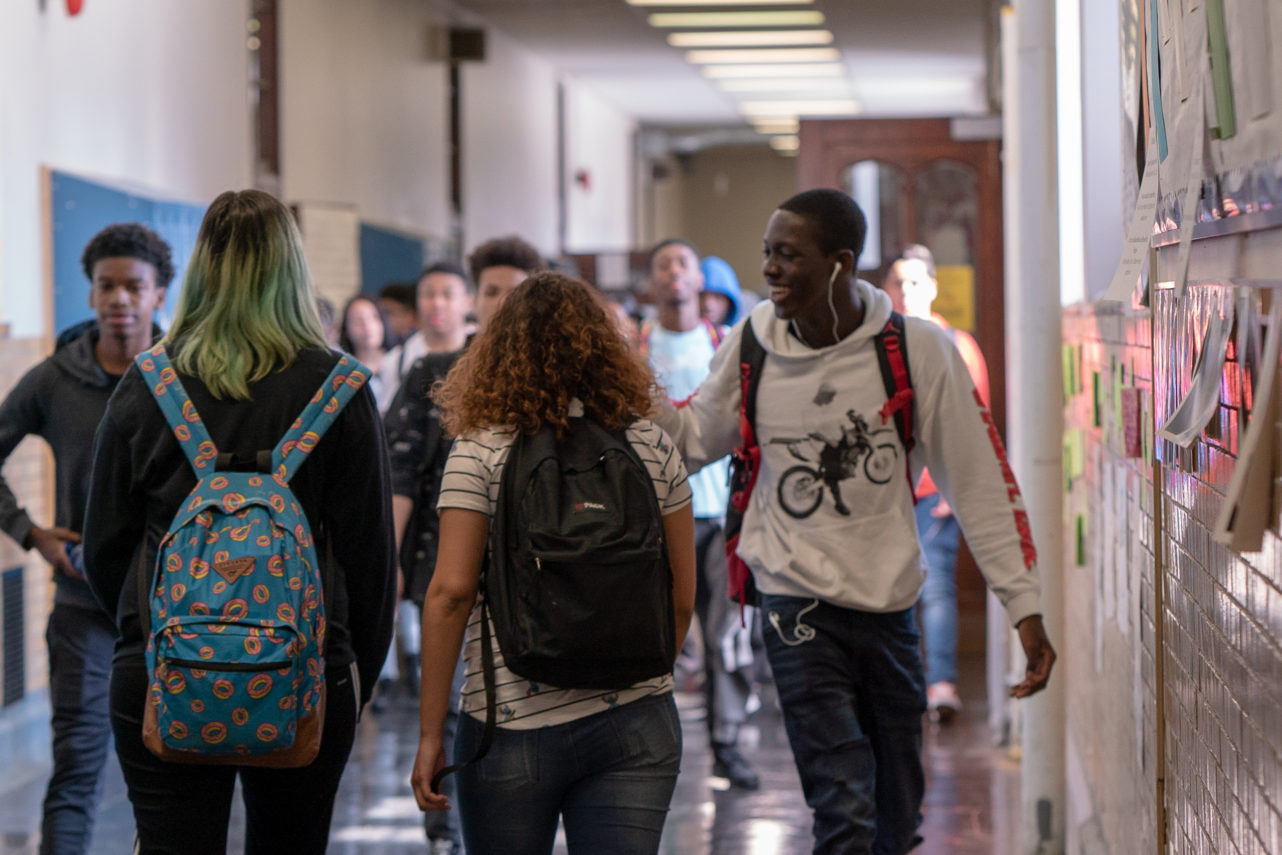Imagine re-inventing an American Institution. Now, imagine re-inventing an American Institution that is so ingrained in the country’s culture and society that it has survived almost an entire century with few, if any, changes. This intimidating scenario is exactly what Dr. Laura Shubilla and her co-founder Chip Linehan decided to face head on with their Philadelphia High School, Building 21 (B21). Empowered to operate outside of the norm through the freedoms that accompany the Philadelphia School District’s Innovation Network, Dr. Shubilla and B21’s school leaders are turning this dream into a reality.
Discussed by many, but acted on by few, the current American education system is a relic of the past; a system developed to prepare students for a world that no longer exists. The ever growing divergence between what students need to succeed in a modern world, and what they are being taught is most evident at the high school level. Students, recognizing this misalignment as well, often end up disengaged, a narrative most common for students coming from low-income areas. Laura and Chip, who connected at Harvard’s Doctorate of Educational Leadership program, knew that in order to best teach these students something had to change.
Building 21 was founded in the Fall of 2014, not on the premise of upending the American education system, but on the idea of creating a school where students can connect to their passions. In theory, this would be accomplished by exposing students to different career paths in their first year or two, before honing in on one or two to focus their studies, and out-of-school experiences on in the third and fourth years.
Students would gain exposure through internships, job shadowing, summer experiences and, as many real world experiences inside the classrooms, as possible, via project based learning bolstered by guest lecturers. Furthermore, unlike almost all other schools in the country, B21 would be a competency-based school, as opposed to a grade-based school. B21 would utilize a competency-based framework called, Learning What Matters (LWM). This model emphasizes personalized learning pathways, and authentic and relevant projects and performance tasks.

B21 defines competencies as the essential skills required for postsecondary readiness. Each competency is intended to connect to a meaningful outcome that empowers learners. Academic competencies include skills progression in core subjects, such as English Language Arts, Math, Science, and Social Studies. Each competency is tied to a continuum of skills (from Level 6 to Level 12), which students develop over their time at B21.
Unlike more traditional school models, the expectation is not that every student in a particular grade will be able to perform at that grade level. Instead, teachers emphasize student progression through the skills continuum over time, and work to provide each student with support that meets their needs. To eliminate barriers, competencies associated with habits of success — including growth mindset, agency, and collaboration with others — are regarded as just as important as academic competencies. Habits of success are assessed similarly to academic competencies where each habit has a corresponding skills’ progression that captures student growth over time. While this individualized approach is time intensive, it is reflective of a strong belief that student learning should be personalized.
The skills associated with each competency are not taught through rote memorization. Instead, education fundamentals are infused into projects and subjects that align with each students’ interests, making each student feel empowered over their own learning and remain engaged throughout high school.
Enacting the B21 model has its challenges. The cause of these challenges are rooted in two realities. The first is that a competency and project based model is a new concept in the education space which requires the development of an entire new world of learning tools, systems and structures. Further, the vast majority of students and teachers enter B21 without any prior experience with a competency-based approach. Thus there is a learning curve for both teachers and students.

To onboard students to the B21 model, all students take a course their freshman year entitled “Foundations.” Foundations provides students with all they need to know about the B21 learning systems, including Learning What Matters, competency-based grading, and the school’s “Personalized Learning Pathways.”
Onboarding teachers to B21’s learning model has proved somewhat more difficult. While all teachers use the Learning What Matters competency-based framework, teachers have autonomy over how to structure learning experiences to best meet students’ needs.
Some teachers find this autonomy empowering and consequently thrive. Others, having taught in traditional teaching models for numerous years, find this level of autonomy overwhelming at times. These teachers report needing more structured support to effectively transition to B21’s learning model. Leadership hopes to find a middle ground for teacher autonomy, where teachers are trusted as professionals but provided with concrete expectations, exemplars, starter studios, and support to successfully make use of that autonomy.
The second reality challenging the B21 model is that from the school’s inception, the founders believed that the school’s design efforts would be a work in progress, and in practice, the design remains ahead of the implementation at B21. Each year, the school has iterated on its approach to better meet the needs of students. For example, given challenges aligning the competency based approach with district expectations, B21 switched to a course based model with competencies embedded within these courses, and is also planning on providing more concrete student skill development through targeted skill-building workshops. As a result of these efforts, students reported that “it’s easier to know how you are doing” and “the systems are more efficient now.”

Work to find B21’s best iteration is still ongoing. Currently, B21 has prioritized clarifying the core elements of the B21 model and increasing supports for teachers to more effectively implement project-based learning across the school.
B21’s iterative nature can be challenging to define and explain to those outside the school community. However, those inside the community report that this iterative nature is part of what makes B21 special. B21 is constantly looking for things that work and swiftly tending to the things that do not work.
While practice still lags behind theory, B21 has the advantage of visionary leaders, external support, and a robust student-centric information system to support its efforts to implement its innovative school model. As the school continues to iterate, constantly looking for the best ways to connect rigorous learning to students’ interests, the American Education Institution will slowly but surely become a bit more malleable, as others in the education space can’t help but notice what is happening at B21.
This article is part of our Philadelphia Innovation High School series, that was created in partnership with the Barra Foundation.

